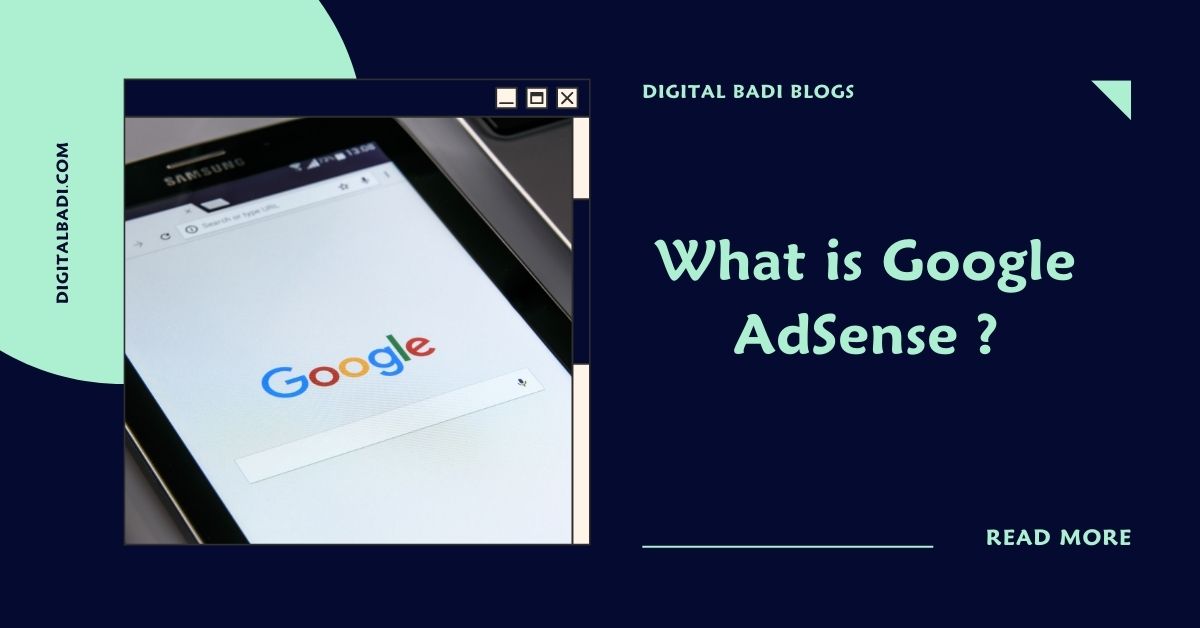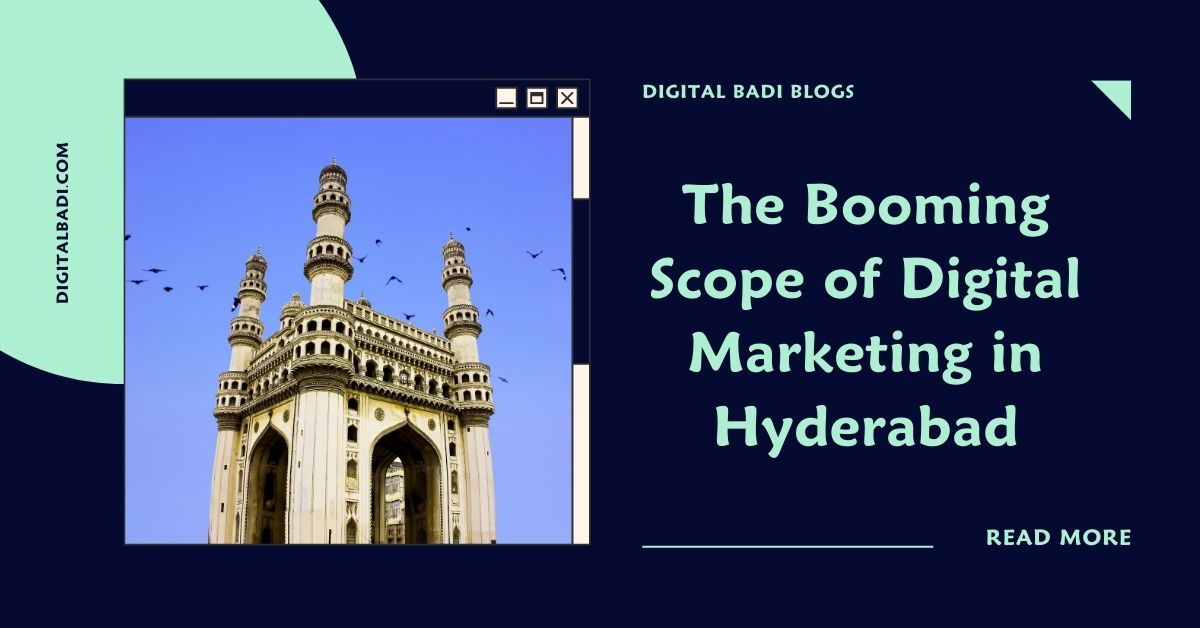Table of Contents
What is Google AdSense
Hey there! John here again, digital marketing expert and founder of Digital Badi. In previous posts we explored all aspects of digital marketing, SEO, social media, blogging and more.
Today I want to focus on a popular monetization platform called Google AdSense. If you have a website, blog or YouTube channel, you can make money through AdSense by displaying Google ads. But how exactly does it work?
What is Google AdSense: AdSense is a free-of-charge, simple way to earn money by displaying ads next to your online content. With AdSense, you can show relevant and engaging ads to your site visitors and even customize the look and feel of ads to match your site.
In this post, I’ll provide an in-depth beginner’s guide to everything Google AdSense – how it works, pros and cons, how to apply and get approved, placing ads on your site, maximizing revenue, and common issues to avoid. Let’s get started!
What is Google AdSense and How Does It Work?
Google AdSense is a free program that allows publishers to earn money by displaying Google ads on their website, YouTube videos, or mobile apps. As visitors view, click, or interact with the ads, the publisher earns a share of the ad revenue.
Here’s a quick overview of how AdSense works:
- Join the AdSense program for free
- Get auto-generated ad code to paste on your pages
- Google scans your content and selects relevant text and image ads
- When visitors click or view ads, you earn money
- Earnings are deposited monthly into your bank account
AdSense is appealing because it requires very little effort to start monetizing your site. Just add the ad code and Google handles the rest – ad targeting, delivery, payments, and reporting.
The Pros and Cons of Using Google AdSense
Is AdSense right for your website or content? Let’s look at some of the key pros and cons:
Pros
- Easy to implement with no coding or technical expertise needed
- Completely free – no cost to join or use the platform
- Little maintenance required – Google manages ads for you
- Earn revenue from day one when ads are running on your site
- Wide range of customized ad formats to match your site’s layout and design
- Mobile-optimized ads and interface
- Ability to block certain ad categories or advertisers
Cons
- Google takes a significant cut of ad earnings (around 68%)
- Limited control over which ads appear on your site
- Ad placement and density can be disruptive to user experience
- Revenue fluctuates based on website traffic volume
- Must meet application criteria like minimum monthly pageviews
- Reporting and metrics lack granularity
- Payment delays – earnings not issued until reaching payment threshold
AdSense can provide an introductory revenue stream but may not be the best long-term monetization approach when compared to other ad platforms or products.
AdSense Program Eligibility and Application Process
Ready to get started with AdSense? First you’ll need to determine if your site or content meets the eligibility criteria. Currently, AdSense requires:
- High quality original content
- Site in existence for at least 6 months
- Majority of visitors from countries AdSense operates in
- No adult, illegal or copyrighted content
- Mobile responsive design (for blogs)
- Sufficient web traffic volume
- Valid contact information
- Google account in good standing
If your site meets these guidelines, you can apply to join AdSense through the Google AdSense website or app. The application asks for:
- Account type – individual or business
- Category of website or content
- Contact information
- Payment details
- Site information including URL, content focus, site age
Google will review your application within a few days. Make sure to accurately represent your site to avoid delays or rejection.
Tip: Have some existing content and traffic first. Brand new sites with no content often get rejected.
Implementing AdSense On Your Site or YouTube Channel
Once approved for AdSense, you can generate your unique ad code within your account and install it on your property.
Websites
For blogs or sites, navigate to Admin > Ad Setup > Ad Code. Copy the auto-generated code snippet and paste it in the header or footer of all site pages. Avoid pasting in content to prevent disruption.
You can also request various ad unit formats like responsive, native, and manual. Use formats that blend well.
YouTube
For YouTube, go to Monetization Settings > Enable Google AdSense. Get video ad code and enable overlay or discovery ads. Enable on select high-performing videos or entire channel.
AdSense will now start serving targeted text, image, and video ads on your website or videos and tracking interactions.
How To Increase Your AdSense Revenue
Once AdSense is implemented, here are some top tips to maximize earnings:
- Increase traffic – More pageviews and ad impressions directly lead to higher earnings. Expand your reach.
- Optimize ad placement – Place ads in positions like side columns, headers, between paragraphs where they are more visible and likely to be clicked. Avoid main content areas.
- Experiment with ad sizes – Bigger ad units tend to perform better. Try different sizes to find the optimal balance.
- Review blocked ads – Ensure you aren’t blocking high performing ad categories relevant to your content.
- Analyze metrics – Use the AdSense dashboard to view CTR, top keywords, geometries to optimize your setup.
- Improve page load speed – Faster loading pages increase clickthrough rates. Enable caching, compression, CDNs to speed up your site.
- Create high-quality, in-depth content – Good content keeps visitors engaged longer and interacting with more ads.
- Target high-value keywords – Focus content on valuable search terms that advertisers bid more for like “buy” and “shop”.
Optimizing layout, content, speed, and analytics can significantly boost AdSense earnings over time.
Common Google AdSense Mistakes to Avoid
Here are some key AdSense pitfalls to avoid:
- Placing too many ads on each page that disrupt user experience.
- Having ads appear immediately one after another down the page rather than spaced out.
- Showing ads above the fold in prominent positions that detract from primary content.
- Enabling ads on low-quality content pages or those with thin or copied content.
- Running ads on pages completely unrelated to the advertisement targeting.
- Having ads load asynchronously causing content reflows.
- Blocking too many ad categories resulting in limited ads available to show.
- Not tracking analytics to optimize ad types, sizes, and placement over time.
- Using AdSense without also having compelling standalone content or product offerings on your site.
Avoid making these mistakes and your AdSense revenue has much greater potential. Monitor it closely.
AdSense Alternatives for Publishers
While AdSense is the most ubiquitous ad network, many publishers opt for alternatives or additional networks as part of their monetization strategies. Some top options include:
- Google Ad Manager (formerly DoubleClick) – Google’s premium programmatic ad platform.
- Media.net – High paying native ads with good RPMs for smaller sites.
- Ezoic – Uses artificial intelligence to optimize ad setup and placements.
- Infolinks – Unobtrusive text-based ads easy to insert in content.
- Qadabra – Specializes in shopping/ecommerce ads from various ad exchanges.
- Ligatus – European ad network focused on native ads.
Having a mix of ad networks and types spreads risk and maximizes collective earnings.
AdSense Reporting, Payments and Account
Finally, let’s quickly cover a few AdSense account management essentials:
Reporting – Monitor performance metrics like page RPM, impressions, CTR, CPC, and revenue in real time in your AdSense dashboard for optimization.
Payments – AdSense pays out earnings monthly via bank transfer, PayPal or Western Union once you exceed the minimum threshold (around $100).
Account – Check account status and policy compliance. Update payment information and contact details as needed in Account Settings.
Support – Access troubleshooting guides or contact support if you have any technical implementation or policy issues.
Stay on top of your AdSense account to ensure smooth earnings.
So there you have it – a complete step-by-step guide to getting started and succeeding with Google AdSense! I hope this post helped explain exactly how AdSense works and provided tips to maximize your earnings.
While it has its downsides, AdSense is a great starting point for monetizing your website content. And remember – creating compelling content should always be your first priority, not just optimizing ads.
Let me know if you have any other questions! I’m always happy to chat more about how to effectively leverage platforms like AdSense. Now go unleash the earning potential of your website!
If You are Looking for Best Digital Marketing Training Institute in Hyderabad.
We Provide Best Digital Marketing Course in Telugu and English Languages.






